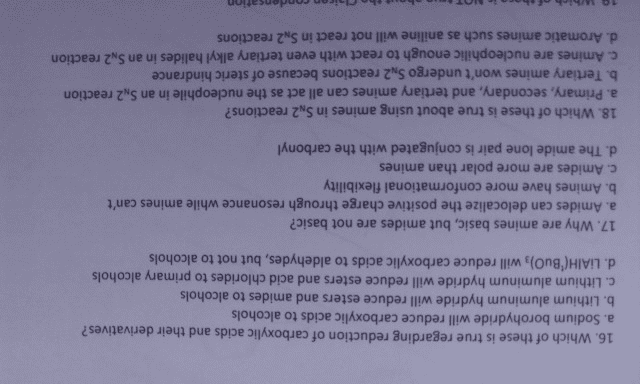CHEM 242 Chapter Notes - Chapter 21: Tetrahedral Carbonyl Addition Compound, Alkoxide, Thioester
Document Summary
A lactone is formed from an open-chain hydroxy acid in which the hydroxyl group has reacted with the acid group to form an ester: Lactams are formed from amino acids, where the amino group and the carboxyl group have joined to form an amide: 21-5: interconversion of acid derivatives by nucleophilic acyl substitution. *the reactivity of acid derivatives toward nucleophilic attack depends on their structure and on the nature of the attacking nucleophile: *resonance stabilization also affects the reactivity of acid derivatives. The less resonance there is, the more reactive the acid derivative is. In general, we can easily accomplish nucleophilic acyl substitutions that convert more reactive derivatives to less reactive ones: **note that the mechanism on the previous page is a generalized addition elimination mechanism for nucleophilic acyl substitution under basic conditions. Many of the upcoming mechanisms will follow this general mechanism. In the basic pathway, the nucleophile attacks the carbonyl oxygen to form a tetrahedral intermediate.



